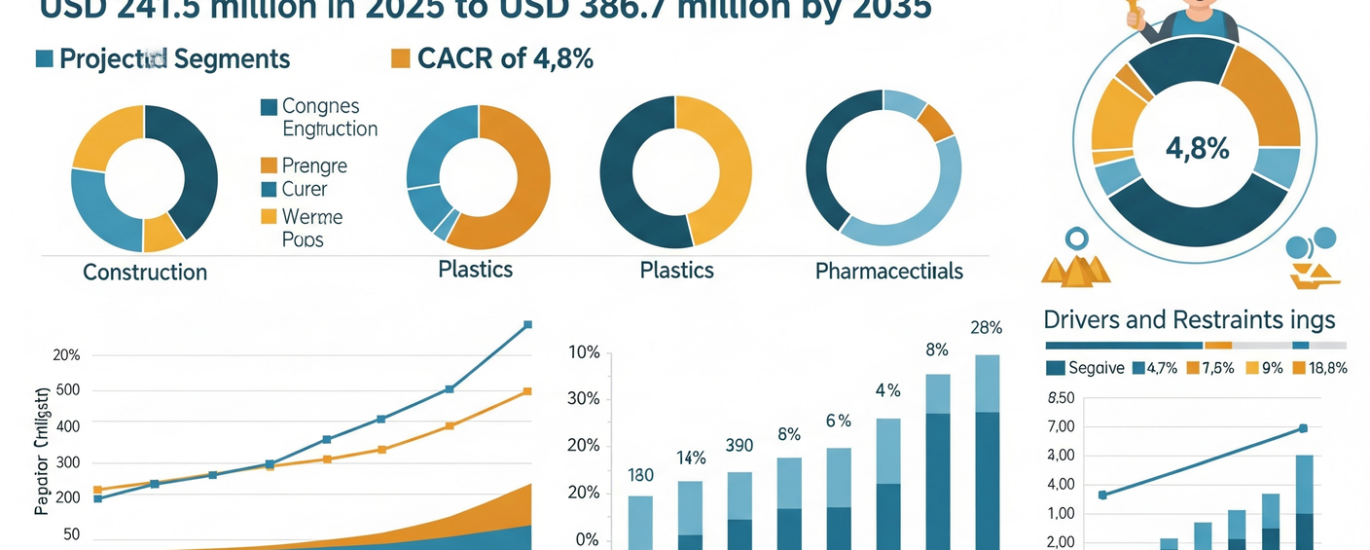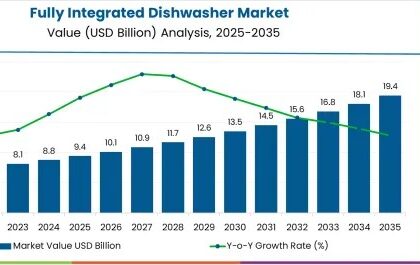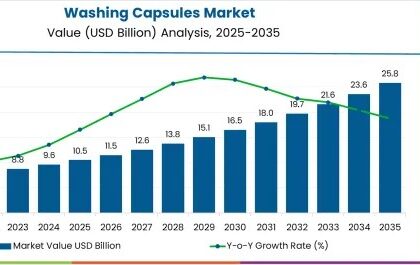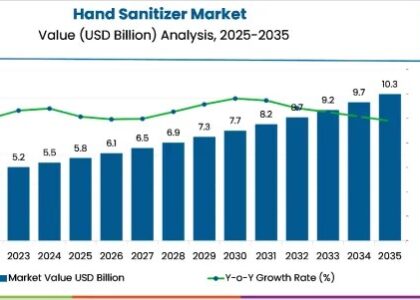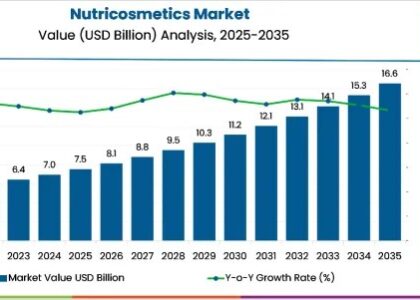The magnesium carbonate is widely known for its role in producing refractory materials, fertilizers, and magnesium oxide. However, beneath these mainstream uses lies a significantly underexplored yet high-impact application: the use of high-purity magnesium carbonate in carbon capture technologies and specialty polymer additives. As industries accelerate their shift toward low-carbon and high-performance material solutions, this niche segment of the magnesium carbonate mineral market is beginning to draw strategic attention.
With a global push toward climate targets and advanced materials, high-purity magnesium carbonate—particularly in synthetic or ultrafine grades—is being integrated into emerging technologies where conventional grades fail to meet technical standards. Its unique chemical reactivity, high surface area, and thermal stability offer opportunities far beyond its traditional markets.
𝐌𝐚𝐤𝐞 𝐈𝐧𝐟𝐨𝐫𝐦𝐞𝐝 𝐃𝐞𝐜𝐢𝐬𝐢𝐨𝐧𝐬 – 𝐀𝐜𝐜𝐞𝐬𝐬 𝐘𝐨𝐮𝐫 𝐒𝐚𝐦𝐩𝐥𝐞 𝐑𝐞𝐩𝐨𝐫𝐭 𝐈𝐧𝐬𝐭𝐚𝐧𝐭𝐥𝐲! https://www.futuremarketinsights.com/reports/sample/rep-gb-11455
Rethinking Magnesium Carbonate: From Chalk Substitute to Strategic Functional Material
Magnesium carbonate (MgCO₃) occurs both naturally and synthetically, and it exists in several forms, including hydromagnesite, nesquehonite, and magnesite. It is typically mined or chemically synthesized, with applications ranging from food additives and antacids to fire retardants and building materials. Most common industrial applications use technical-grade MgCO₃ with relatively low purity, suitable for general bulk consumption.
However, when produced at high purities (typically >98%) and in fine or nanoscale particle sizes, magnesium carbonate exhibits characteristics highly valued in advanced material applications—particularly where thermal control, adsorption properties, or chemical reactivity are essential. These properties are pushing it into sectors like carbon dioxide (CO₂) sequestration, polymer flame retardancy, and high-end cosmetics.
High-Purity Magnesium Carbonate in Carbon Capture and Storage (CCS)
One of the lesser-known but increasingly critical uses of magnesium carbonate is its role in mineral carbonation for carbon capture and storage. In this process, MgCO₃ serves as an intermediary or product of the chemical reaction between magnesium-bearing minerals and CO₂. When CO₂ reacts with magnesium oxide or magnesium hydroxide in the presence of water, it forms stable magnesium carbonate, thereby permanently trapping the carbon.
Synthetic magnesium carbonate—produced under controlled conditions with high purity—acts as an ideal reagent or product for direct air capture (DAC) and post-combustion capture systems. Unlike calcium carbonate-based systems, magnesium carbonate offers better stability and higher theoretical storage capacity per unit of CO₂. Moreover, it does not produce as much by-product or degradation in high-humidity environments.
Pilot projects in Iceland and Canada are actively studying how magnesite-rich formations or synthetic MgCO₃ can be used to lock atmospheric carbon into geological structures. The ability to accelerate natural mineralization using high-purity magnesium carbonate could make CCS more scalable, cost-effective, and environmentally sustainable.
To Gain More Insights about this Research, Visit! https://www.futuremarketinsights.com/reports/magnesium-carbonate-minerals-market
Magnesium Carbonate as a Flame Retardant and Smoke Suppressant in Specialty Polymers
Another underexplored but growing application is the use of high-purity MgCO₃ in engineering plastics and polymer compounds. When incorporated as an additive, magnesium carbonate not only improves flame retardancy but also acts as a smoke suppressant by releasing water vapor and carbon dioxide when heated. This cooling effect slows down combustion and reduces smoke density—critical factors in electronics, automotive interiors, and building materials.
Unlike halogenated flame retardants, magnesium carbonate is non-toxic, thermally stable, and environmentally benign. Its ability to synergize with aluminum hydroxide and other mineral fillers creates enhanced fire-resistant composites without sacrificing mechanical performance.
Recent research has shown that magnesium carbonate-based additives can help meet UL94 V-0 flammability standards in polyolefins and PVC, making them ideal for insulation wires, server components, and EV battery casings. As the demand for halogen-free, recyclable flame retardants increases, magnesium carbonate is poised to capture a greater share of this niche market.
Supply Dynamics and Purity Constraints
High-purity magnesium carbonate is not as widely produced as technical-grade material due to its cost and stringent production requirements. It is often synthesized using magnesium hydroxide precipitation or carbonation of magnesium salts in carefully controlled conditions. The production process must avoid contamination with heavy metals, silicates, or chlorides, especially for applications in CO₂ capture or polymer compounding.
Major producers such as Konoshima Chemical Co., Lehmann & Voss, and Kyowa Chemical Industry are investing in refining processes to scale up high-purity grades. Meanwhile, newer entrants in Southeast Asia and the Middle East are exploring synthetic production from desalination brines and magnesium-rich industrial byproducts—efforts that could lower cost barriers and improve sustainability.
The price of high-purity MgCO₃ can be two to four times that of bulk-grade material, but this premium is justified in performance-critical applications. According to Future Market Insights, the global magnesium carbonate mineral market is worth USD 241.5 million by 2024 and is set to acquire a valuation of USD 386.7 million by 2034, reflecting a CAGR of 4.8% between 2024 and 2034.
Inorganic Chemicals Industry Analysis: https://www.futuremarketinsights.com/industry-analysis/inorganic-chemicals
Sustainability and Circular Economy Perspectives
With increasing environmental regulations around emissions, plastic additives, and industrial waste, magnesium carbonate is being re-evaluated as a circular resource. In cement and building materials, MgCO₃ is being studied for its potential to lower CO₂ footprints by replacing more carbon-intensive compounds. Its role as a precursor in magnesium oxide-based cements—known for absorbing CO₂ over time—is another promising area.
In cosmetics, ultrafine magnesium carbonate is gaining traction as a talc alternative due to safety concerns. Its natural absorbency, low abrasiveness, and skin compatibility are positioning it for future growth in dermatological products, especially as talc-containing formulations face scrutiny.


